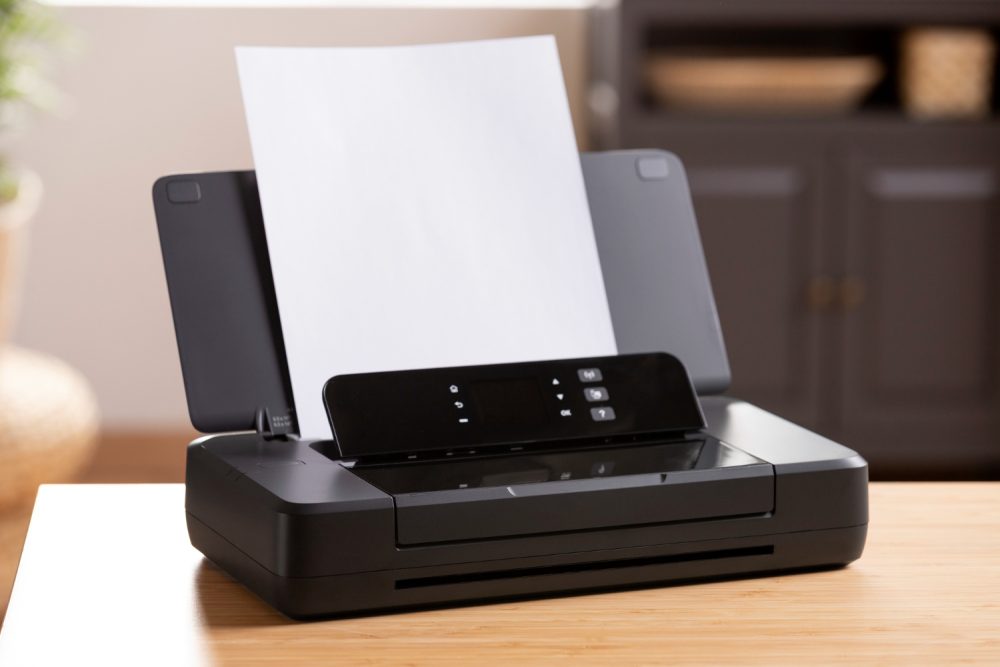In the world of office and home printing, the terms “multifunction printer” (MFP) and “standard printer” are frequently used, often interchangeably by those unfamiliar with the nuances. However, the two have significant differences, each catering to different needs and offering distinct advantages. Understanding these differences is essential for deciding which type of printer best suits your requirements. This comprehensive article delves into the distinctions between multifunction and standard printers, exploring their features, benefits, and ideal use cases.
Understanding Standard Printers
A standard printer is designed primarily for printing documents or images. These printers come in various types, such as inkjet and laser, each with its own benefits and limitations.
- Inkjet Printers: Ideal for high-quality colour printing and photo printing, they use liquid ink sprayed through microscopic nozzles onto the paper.
- Laser Printers: These printers are suitable for high-volume printing, especially for text documents. They use toner powder and laser technology to produce prints.
Advantages of Standard Printers
- Simplicity: With a singular function, standard printers are straightforward to use.
- Cost-Effectiveness: Generally, they are less expensive upfront compared to multifunction printers.
- Quality: High-quality output, particularly in their specialised areas (e.g., inkjets for photos, lasers for text).
Limitations of Standard Printers
- Limited Functionality: They only print, lacking capabilities such as scanning, copying, and faxing.
- Space: If you need additional functionalities, you must buy separate devices, which take up more space.
Understanding Multifunction Printers
As the name suggests, multifunction printers are all-in-one devices that combine several functionalities into a single unit. Typically, an MFP includes:
- Printing: Both monochrome and colour, using either inkjet or laser technology.
- Scanning: Digitising physical documents into electronic format.
- Copying: Making duplicates of documents.
- Faxing: Sending documents over a phone line (though less common in modern units due to digital communication).
Advantages of Multifunction Printers
- Versatility: They offer multiple functions in one device, ideal for businesses or home offices needing various document management capabilities.
- Space-Saving: Consolidating multiple devices into one unit saves space.
- Convenience: Having all functions in one place simplifies tasks and increases productivity.
- Cost Efficiency: Although more expensive initially, the cost savings over time can be significant due to reduced maintenance and the need for fewer devices.
Limitations of Multifunction Printers
- Complexity: With more features, multifunction printers can be more complicated to set up and use.
- Higher Initial Cost: They are typically more expensive than single-function printers.
- Compromise on Quality: In some cases, the quality of each individual function (e.g., scanning or faxing) may not be as high as that of dedicated devices.
Key Differences Between Standard Printers and Multifunction Printers
Functionality
- Standard Printer: Solely focused on printing tasks. Ideal for users who only need to print documents or images.
- Multifunction Printer: This printer offers printing, scanning, copying, and often faxing. It is suitable for users who need multiple document management capabilities.
Cost
- Standard Printer: Generally less expensive initially. Long-term costs depend on print volume and ink/toner usage.
- Multifunction Printer: Higher initial cost, but potentially more cost-effective in the long run due to reduced need for multiple devices.
Space and Convenience
- Standard Printer: Requires additional devices for other functions, taking up more space.
- Multifunction Printer: Saves space by combining multiple devices into one. Convenient for users needing various functionalities.
Quality of Output
- Standard Printers often deliver superior quality for their specific tasks (e.g., photo printing for inkjets, text for lasers).
- Multifunction Printer: Quality is good but may not match that of dedicated devices, especially for high-end tasks.
Maintenance and Troubleshooting
- Standard Printer: Easier to maintain and troubleshoot due to its singular function.
- Multifunction Printer: Maintenance can be more complex due to multiple integrated functions.
Choosing the Right Printer for Your Needs
When deciding between a standard printer and a multifunction printer, consider the following factors:
- Primary Use Case: Identify your main requirements. A standard printer might be sufficient if you primarily print documents or images. A multifunction printer is more suitable if you need to scan, copy, and occasionally fax.
- Volume of Work: Laser printers (whether standard or MFP) are often more economical and efficient for high-volume environments. For lower volumes, an inkjet might suffice.
- Budget: Consider both the initial cost and long-term expenses. While multifunction printers have a higher upfront cost, they might save money over time by eliminating the need for multiple devices.
- Space Constraints: If space is limited, a multifunction printer can save significant room by combining multiple functions into one unit.
- Quality Requirements: A dedicated standard printer might offer better results if high-quality photo printing or professional document printing is a priority.
- Technology and Features: Evaluate the additional features and technology each option offers, such as wireless connectivity, mobile printing capabilities, and advanced scanning options.
Contact MeiMag Electronics for details
Contact us today for more information about our multifunction printers.

